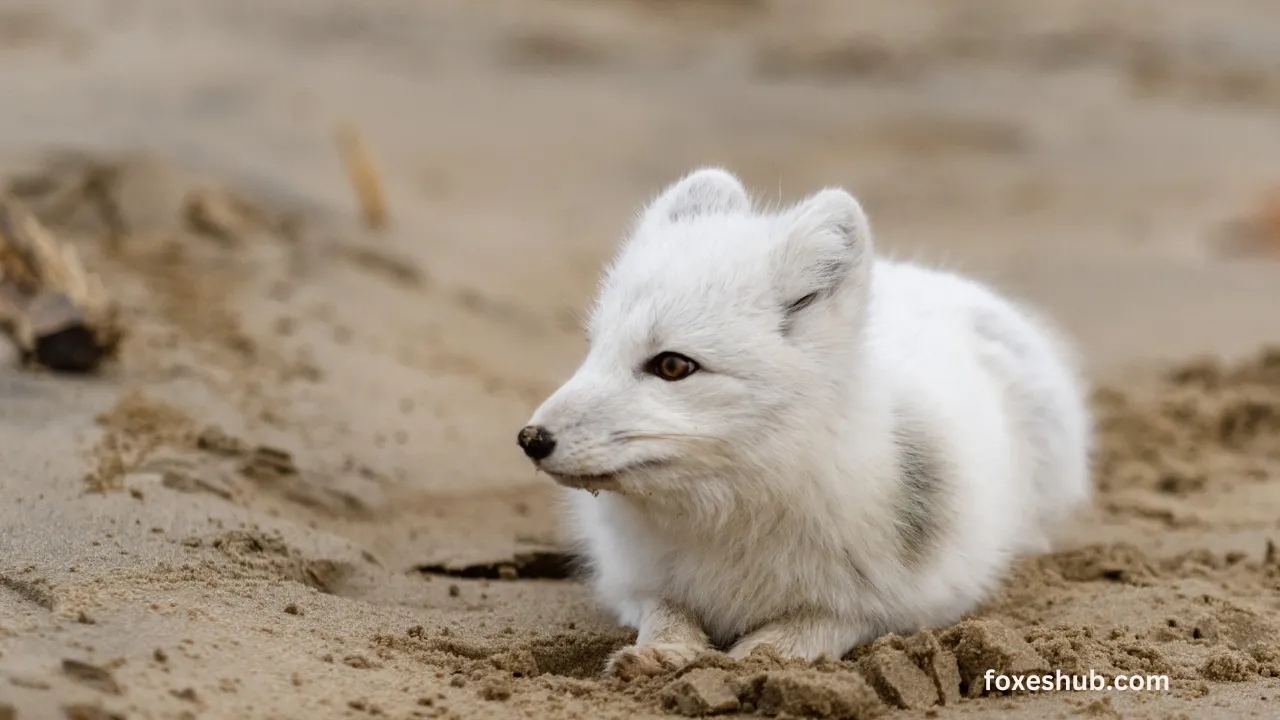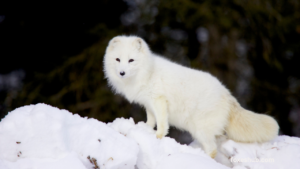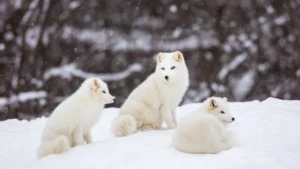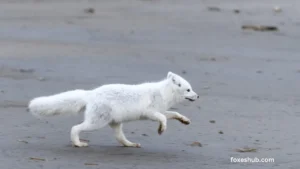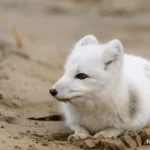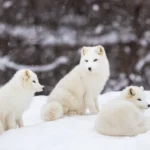The Arctic fox (Vulpes lagopus) is an incredible species, perfectly adapted to survive in the harsh and unforgiving conditions of the Arctic tundra, making it a fascinating subject of study for evolutionary biologists.
The evolution of the Arctic fox is a testament to the remarkable ability of organisms to adapt to diverse and extreme environments.
Contents
- 1 Introduction to the Arctic Fox
- 2 Genetic and Fossil Evidence
- 3 Adaptations to the Arctic Environment
- 4 The Impact of Climate Change
- 5 Conclusion
- 6 FAQs
- 6.1 What are the key adaptations of Arctic foxes to the harsh Arctic tundra environment?
- 6.2 How has the evolution of the Arctic fox been shaped by the unique challenges of the Arctic tundra?
- 6.3 What role does camouflage play in the survival of Arctic foxes in the Arctic tundra?
- 6.4 How have Arctic foxes evolved specialized hunting strategies to thrive in the Arctic tundra?
- 6.5 What are the evolutionary advantages of the small size and agile nature of Arctic foxes in the Arctic tundra ecosystem?
Introduction to the Arctic Fox
The Arctic fox is a small, resilient canid species with a circumpolar distribution, ranging across the Arctic regions of North America, Europe, and Asia. This species is uniquely suited to thrive in the Arctic’s cold, barren landscapes, showcasing a range of specialized adaptations that equip it to face the challenges of its environment.
Genetic and Fossil Evidence
Research into the evolution of Arctic foxes has involved the analysis of both genetic and fossil evidence. Studies have indicated that the divergence of the Arctic fox from its closest relative, the red fox (Vulpes vulpes), occurred approximately 3 to 4 million years ago during the late Pliocene to early Pleistocene.
Genetic analyses have provided valuable insights into the evolutionary history of the Arctic fox, elucidating its relationships with other members of the Vulpes genus and shedding light on the genetic adaptations that underpin its survival in the Arctic environment.

Adaptations to the Arctic Environment
The evolutionary journey of the Arctic fox is characterized by a series of remarkable adaptations that enable it to thrive in one of the most challenging environments on Earth. These adaptations include:
- Thick Fur: The Arctic fox boasts a luxurious, thick coat of fur that provides superior insulation against the extreme cold. It has two seasonal pelage colorations, with a white coat in winter for camouflage and a brownish-gray coat in summer for effective concealment against the tundra landscape.
- Reduced Appendages: Its short legs, snub nose, and small, rounded ears minimize heat loss, an adaptation to the harsh Arctic climate.
- Storage of Fat: The ability to store excess body fat during periods of plenty, which serves as an energy reserve during the scarcity of winter.
- Dietary Adaptations: The Arctic fox is an omnivore, consuming small mammals, birds, fish, carrion, and berries, showcasing its dietary flexibility in adapting to the resource-scarce Arctic ecosystem.
These adaptations represent the culmination of a prolonged evolutionary process, shaped by natural selection and genetic variation, allowing the Arctic fox to occupy its ecological niche effectively.
The Impact of Climate Change
Contemporary challenges, such as climate change, are greatly impacting the Arctic environment. The warming of the Arctic has profound implications for the Arctic fox, affecting its habitat, prey availability, and competition with other species, leading to potential shifts in its distribution and behavior.
Understanding the genetic basis of the Arctic fox’s adaptations and its capacity to respond to changing environmental conditions is crucial for predicting its future and implementing conservation strategies.
Conclusion
The evolution of the Arctic fox stands as a testament to the power of natural selection and adaptive processes, highlighting the extraordinary ability of organisms to thrive in the most extreme environments.
Through an intricate interplay of genetic, physiological, and behavioral adaptations, the Arctic fox has carved out a remarkable existence in the Arctic tundra, offering valuable insights into the complexities of evolutionary biology and the resilience of life on Earth.
In conclusion, the study of the evolution of Arctic foxes provides a captivating window into the intricate workings of nature, underscoring the awe-inspiring ability of living organisms to evolve and persist in the face of formidable challenges.
FAQs
What are the key adaptations of Arctic foxes to the harsh Arctic tundra environment?
Arctic foxes have several key adaptations to survive in the harsh Arctic tundra, including their thick, insulating fur that changes seasonally, allowing them to adapt to different environmental conditions. They also have specialized paws for efficient movement on snow and ice, and their keen sense of hearing helps them locate prey under the snow.
How has the evolution of the Arctic fox been shaped by the unique challenges of the Arctic tundra?
The evolution of the Arctic fox has been shaped by the extreme conditions of the Arctic tundra, leading to the development of traits such as a thick fur coat for insulation, efficient hunting strategies, and the ability to survive on a varied diet, including small mammals, birds, and carrion.
What role does camouflage play in the survival of Arctic foxes in the Arctic tundra?
Camouflage plays a vital role in the survival of Arctic foxes in the Arctic tundra, allowing them to blend into their snowy surroundings and avoid detection by predators and prey alike. Their ability to change coat color, known as the “cloak of seasons,” is an exceptional adaptation for effective camouflage.
How have Arctic foxes evolved specialized hunting strategies to thrive in the Arctic tundra?
Arctic foxes have evolved specialized hunting strategies to thrive in the Arctic tundra, such as using their acute hearing to locate prey under the snow, employing stealth and patience to ambush small mammals, and scavenging on carcasses left behind by larger predators.
What are the evolutionary advantages of the small size and agile nature of Arctic foxes in the Arctic tundra ecosystem?
The small size and agile nature of Arctic foxes provide evolutionary advantages in the Arctic tundra ecosystem, allowing them to navigate through snow-covered terrain with ease, access burrows and dens of small mammals, and evade larger predators through their quick and nimble movements, contributing to their overall survival in this challenging environment.

